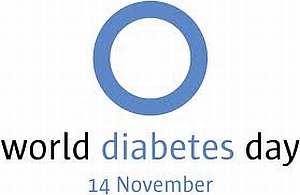Mexico - A total of 89,414 people are projected to die this year of diabetes in Mexico, up 92 % from the year 2000, health activists and experts said.
In a press conference, the director of the consumer-advocacy group 'The Power of the Consumer,' Alejandro Calvillo, presented a study based on research, official data, and experts’ figures on this year’s outlook for obesity and diabetes.
The activist said the high mortality rate for diabetes in Mexico is "in large part due to a lack of prevention, medical care policies, and poor treatment provided to patients."
According to the study, one of the goals established in the 2007-2012 National Health Program was to achieve a 20% drop in the growth of the death rate due to diabetes mellitus from the level registered in the 1995-2006 period, which was 4.9% per year.
That goal meant lowering the annual growth in the death rate to 3.9% for the 2007-2012 period. However, according to a report from the Mexican government on September 1st, the number of deaths from diabetes had risen by an average annual rate of 4.1%.
"Calderon’s policies have failed and if no progress is made in the next six-year period, the human and financial cost will continue to worsen. The challenge lies in the next administration headed by (President-elect) Enrique Peña Nieto," Calvillo said.
According to the activist, in the six-year term of outgoing President Felipe Calderon, diabetes was responsible for 482,654 deaths, an increase of 35% over the six-year tenure of predecessor Vicente Fox, or 120,626 more deaths.
Mexico currently ranks eighth worldwide in the prevalence of diabetes, although international experts project that by 2025 the country will be in "sixth or seventh place, with 11.9 million Mexicans with diabetes."
In terms of deaths attributed to the disease, Mexico ranks sixth in the world and third in the Americas.
According to the study, diabetes has been the No. 1 cause of death in Mexico since 2000, responsible for 17.2% of all deaths. A total of 38 new cases are diagnosed every hour and every two hours five people die from diabetes-related complications.
Calvillo said that despite the seriousness of the problem, the current government has "given in" to pressure from the food and beverage industry and permitted it to self-regulate.
For his part, Dr. Abelardo Avila, of the Salvador Zubiran National Institute of Medical Sciences and Nutrition, said that Mexico is suffering the worst obesity epidemic in the history of humanity, "both because of its accelerated growth and the damage to people’s health due to its inability to cope with its consequences."
 |
"Unless the epidemic of obesity, diabetes, and other health damages is stamped out with truly effective public actions and policies, we’ll put not only the country’s health but also its very viability at high risk," Dr. Avila said.
He said the greatest danger at present "is to suppose that the lukewarm actions undertaken to date are serving to improve the situation; there needs to be objective recognition of the seriousness of the damage and the urgency of tackling the problem with all the resources and capacities of the state and civil society."
According to the study, the total cost of diabetes in Mexico rose from $230 million in 2003 to nearly $684 million in 2010 - an increase of more than 290 % in seven years.


